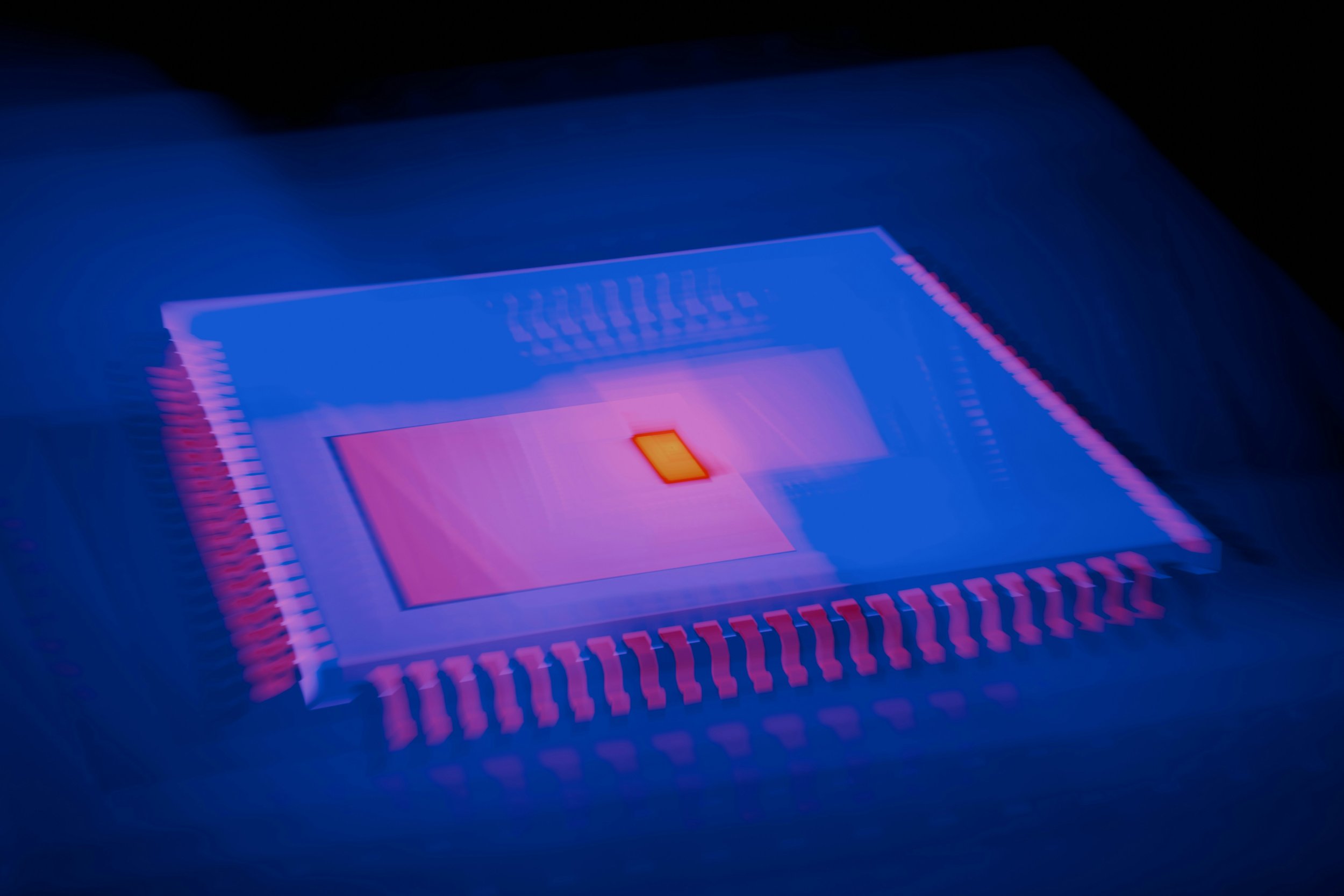Natilus
This company is in the pipeline of America 2030, IPO CLUB’s $50M, actively managed secondary fund focused on U.S. defense, energy, security, and AI.
Founded in 2016, it is based in San Diego, CA, and employs around 45 people. It’s a leader in the industry sectors of aerospace and logistics.
What is Natilus?
Founded in 2016 by Aleksey Matyushev and Anatoly Starikov, It specializes in developing next-generation blended-wing-body cargo aircraft designed to reduce the cost and environmental impact of air freight. Natilus aims to bridge the gap between the speed of air freight and the cost-effectiveness of ocean freight by leveraging autonomous technology and innovative aircraft designs. The company's flagship model, the Natilus N3.8T, is a twin-engine turboprop capable of carrying up to 3,855 kg (8,500 lbs) with a range of 1,667 km (1,035 miles).
What does Natilus do?
Natilus is an aerospace company specializing in innovative blended-wing-body (BWB) aircraft, enhancing aerodynamic performance, fuel efficiency, and cargo/passenger capacity.
Natilus Key Areas of Focus
Blended-Wing-Body Aircraft Design
Integrates wings and fuselage into a unified structure, significantly improving aerodynamic efficiency, reducing drag, and increasing cargo capacity.
Aircraft Models
Kona Cargo Aircraft:
Unmanned cargo-focused design.
460 pre-orders secured, expected commercial service by 2028.
Horizon Passenger Aircraft:
BWB design targeting narrowbody passenger market (up to 200 passengers).
Promises 50% lower emissions compared to traditional aircraft.
Expected entry into service in the early 2030s.
Sustainability and Efficiency
Aircraft designed for significantly reduced carbon emissions, aligning with industry-wide sustainability goals.
Horizon passenger aircraft specifically aimed at dramatic emission reduction.
Defense Applications
Exploring BWB technology for defense roles, including aerial refueling and strategic airlift missions.
Strategic partnerships established for potential U.S. Air Force contracts.
Innovation and Strategic Partnerships
Collaborates with airlines and suppliers for technology advancement and operational integration.
Utilizes advanced materials, such as carbon fiber reinforced polymers (CFRP), in aircraft production.
Natilus Opportunities
Innovative Aircraft Design
Blended-wing-body (BWB) design significantly improves aerodynamic efficiency.
Offers up to 60% greater cargo capacity and 30% lower fuel consumption than traditional aircraft.
Sustainability and Emissions Reduction
Aircraft designs align with aviation industry sustainability goals.
Horizon passenger aircraft promises 50% lower emissions, appealing to airlines pursuing net-zero objectives.
Market Entry and Competitive Position
Targets underserved 200-seat narrowbody passenger segment.
Potential to disrupt market share currently dominated by Boeing and Airbus.
Autonomous Cargo Operations
Kona cargo aircraft offers autonomous, remote, and rough-runway operational capabilities.
Provides significant logistical advantages, especially in underserved regions.
Strategic Partnerships and Orders
Secured substantial pre-orders (460+ aircraft, $6.8 billion in commitments).
Partnerships with Nolinor Aviation, Volatus Aerospace, and other key players enhance market presence and scalability.
Growth Potential
Robust order pipeline positions Natilus for rapid growth.
Expansion into passenger aircraft sector further diversifies revenue streams and broadens market opportunities.
Natilus Industry Sectors
Cargo and Logistics
Developing blended-wing-body (BWB) cargo aircraft (Kona, Alisio, Nordes) designed for increased cargo capacity, efficiency, and reduced operational costs across regional and international air freight markets.
Commercial Aviation
Expanding into passenger aviation with the Horizon BWB aircraft, targeting the 200-seat narrowbody market segment, emphasizing efficiency, lower emissions, and enhanced passenger capacity.
Defense and Aerospace
Leveraging BWB technology for defense applications, including strategic airlift and aerial refueling missions.
Actively pursuing U.S. Air Force contracts through strategic defense industry partnerships.
Sustainable Energy and Transportation
Prioritizing sustainable propulsion technologies, including hydrogen-electric solutions, to significantly reduce aircraft carbon emissions.
Aligning aircraft design with global sustainability and zero-emission aviation goals.
Natilus Business Development
Strategic Partnerships
MONTE Aircraft Leasing: Provides financing and leasing options for Natilus’s Kona cargo aircraft, facilitating market entry and customer accessibility.
New Vista Capital: Strategic guidance on scaling operations, expanding supply chains, and executing go-to-market strategies.
Product Development
Kona Cargo Aircraft:
Autonomous cargo aircraft.
Offers more than twice the cargo capacity of traditional designs, achieving 60% cost reduction.
Horizon Passenger Aircraft:
200-seat blended-wing-body (BWB) passenger aircraft targeting the narrowbody market segment.
Promises 25% lower weight, 40% increased passenger capacity, and 50% lower emissions compared to conventional aircraft.
Market Expansion
Cargo Aviation:
Secured over $6 billion in advance purchase commitments, indicating strong market demand and customer validation.
Passenger Aviation:
Expanding into the passenger market to address demand in the 200-seat narrowbody segment, challenging established manufacturers like Boeing and Airbus.
Funding and Investment
Significant financial backing through advanced orders, indicating robust investor and industry confidence.
Leveraging strategic investments (e.g., New Vista Capital) to accelerate growth, product commercialization, and market penetration.
Natilus continues to strategically leverage partnerships, innovative product design, and strong investor backing to advance its leadership in next-generation aerospace technology.
Natilus Growth
Cargo Market Expansion
Autonomous Cargo Aircraft: Developing Kona, Alisio, and Nordes models designed for autonomous cargo operations, significantly increasing cargo capacity and operational efficiency.
Strong Order Pipeline: Over 460 pre-orders and $6.8 billion in purchase commitments position Natilus to disrupt traditional air freight markets, particularly benefiting e-commerce and logistics industries.
Passenger Market Entry
Horizon Aircraft: A 200-seat blended-wing-body (BWB) airliner offering 50% lower emissions and 40% increased passenger capacity compared to conventional narrowbody aircraft.
Market Potential: Capitalizing on projected global demand for thousands of new passenger aircraft over the next two decades, specifically targeting the underserved 200-seat segment.
Defense Sector Opportunities
Strategic Partnerships: Collaboration with defense technology companies to pursue U.S. Air Force contracts, such as aerial refueling and strategic airlift missions.
Autonomous Technology: Leveraging advanced autonomous capabilities to enhance military logistics and operational flexibility.
Sustainability and Technological Innovation
Emissions Reduction: Commitment to significantly lower carbon emissions aligns with global aviation sustainability targets, appealing to environmentally focused customers and investors.
Advanced Materials and Propulsion: Use of carbon fiber reinforced polymers (CFRP) and innovative propulsion technologies positions Natilus at the forefront of aerospace innovation, potentially opening new partnership and licensing opportunities.
Natilus's focus on innovative aircraft design, sustainability, defense applications, and strategic market positioning presents substantial opportunities for future growth.
Natilus Biggest Strengths
Innovative Aircraft Design (BWB)
Enhanced aerodynamic efficiency, significantly reducing drag and fuel consumption.
Achieves superior lift-to-drag ratios, lowering operational costs and carbon emissions.
Increased Cargo Capacity
BWB design offers 60% more cargo volume compared to traditional aircraft of similar size, highly beneficial for cargo and logistics operations.
Autonomous Capabilities
Aircraft designed for autonomous operations, addressing pilot shortages and enabling operations from remote or unpaved runways.
Offers substantial operational flexibility and efficiency, particularly beneficial for underserved or challenging environments.
Sustainability and Emission Reductions
Natilus aircraft promise significant reductions in carbon emissions:
Horizon passenger aircraft targets 30-50% less fuel consumption and emissions.
Aligns closely with aviation industry sustainability and decarbonization objectives.
Strategic Partnerships
Robust partnerships with industry leaders, such as Volatus Aerospace and MONTE Aircraft Leasing, providing strategic market entry, financing, and operational scalability.
Natilus's strengths in innovative design, increased capacity, autonomous technologies, sustainability, and strategic alliances uniquely position the company as a future leader in next-generation aviation.
This company is in the pipeline of America 2030, IPO CLUB’s $50M, actively managed secondary fund focused on U.S. defense, energy, security, and AI.
Natilus Intellectual Property
Natilus's intellectual property (IP) strategy focuses on protecting its innovative blended-wing-body (BWB) aircraft designs, particularly through patents and trade secrets. Here's an overview of Natilus's IP landscape:
Natilus has a patent-pending "Diamond" cargo-bay design, which allows for a 60% increase in cargo volume and reduces flight costs by 60% compared to traditional aircraft.
Natilus Competitive Position
Competitive Advantages
Innovative Aircraft Design
Blended-wing-body (BWB) structure delivers 40% more volume and 30% lower fuel consumption.
Reduces carbon emissions by up to 50% compared to conventional narrowbody aircraft (e.g., Airbus A320neo, Boeing 737 MAX).
Sustainability Leadership
Positioned as a sustainable aviation leader, aligning closely with global decarbonization efforts and environmental regulations.
Market Opportunity
Capitalizes on production bottlenecks affecting major competitors like Boeing and Airbus.
Targets underserved 200-seat passenger segment, addressing production gaps and high market demand.
Competitive Challenges
Established Competitors
Strong competition from established aerospace giants (Boeing, Airbus) with substantial resources, brand loyalty, and established distribution and service channels.
Certification and Regulatory Compliance
Faces challenges navigating rigorous and lengthy aviation certification processes.
Market Adoption
Must overcome customer hesitancy toward new aircraft designs and establish trust in operational reliability and support infrastructure.
Strategic Opportunities
Partnership Development
Leveraging strategic collaborations with airlines, logistics firms, and suppliers to enhance operational credibility and accelerate market entry.
Production and Scale
Capitalizing on industry production constraints from major manufacturers, creating opportunities in the underserved 200-seat narrowbody market.
Is Natilus publicly traded?
This company is still private, and there are a number of notable shareholders, including IPO CLUB, Flexport Ventures (Participated in February 2022 funding round), Liquid 2 Ventures and Hub71’s Microsoft Reactor Program.
For more coverage about Natilus, subscribe to our club letter
Natilus valuation
Natilus has raised a total of $750,000 over eight funding rounds, with its latest round being an unattributed VC funding in February 2022. While specific valuation figures are not provided, the company's innovative technology and large-scale pre-orders suggest a positive outlook for its financial health and future valuation.
Natilus stock
Stock price source: IPO CLUB Valuation at Market© - Become a member for in-depth coverage
Natilus IPO
Current IPO Status: No immediate plans for an IPO.
This company is in the pipeline of America 2030, IPO CLUB’s $50M, actively managed secondary fund focused on U.S. defense, energy, security, and AI.
M&A in similar companies
Industry Trends
Increased Activity: Aerospace and aviation M&A activity remains strong, driven by industry consolidation and strategic expansion, particularly by private equity firms employing buy-and-build strategies.
Private Equity Dominance: Buy-and-build strategies are prevalent, with private equity firms aggregating specialized aerospace companies to enhance capabilities and market share.
Recent Notable Deals
Mobix Labs – SCP Manufacturing:
Strategic acquisition aimed at strengthening capabilities in aerospace and defense components, reflecting broader trends in targeted technology enhancement and industry consolidation.
Market Drivers
Growing demand for innovative aerospace technologies, driven by sustainability, efficiency, and cost-reduction priorities.
Increasing interest in specialized aviation solutions, including autonomous aircraft and advanced manufacturing technologies.
Challenges and Opportunities
Challenges: Regulatory complexities, certification processes, and ongoing supply chain disruptions.
Opportunities: Strategic acquisitions driven by technological advancements, market expansion, and sustainability-focused innovation.
Introducing Natilus
Natilus and America 2030 Latest News
Stay up-to-date with all the latest news pertaining to Natilus stock, IPOs, and investment opportunities. By clicking here, you'll gain access to real-time updates and in-depth analysis from market experts, empowering you to make informed decisions about your investment journey. Whether you're a seasoned investor or just getting started, our platform is tailored to provide you with all the crucial information you need to navigate the thrilling world of the stock market and IPOs. Dive in and keep your finger on the pulse of the financial markets.





Explore the top emerging startups in AI infrastructure, from fast inference chips to quantum computing. This snapshot reveals competitive clusters across five high-growth segments: hardware, cloud compute, data platforms, robotics, and quantum. Gain insight into which firms are defining the next wave of AI.